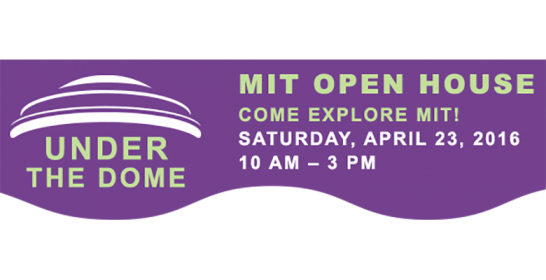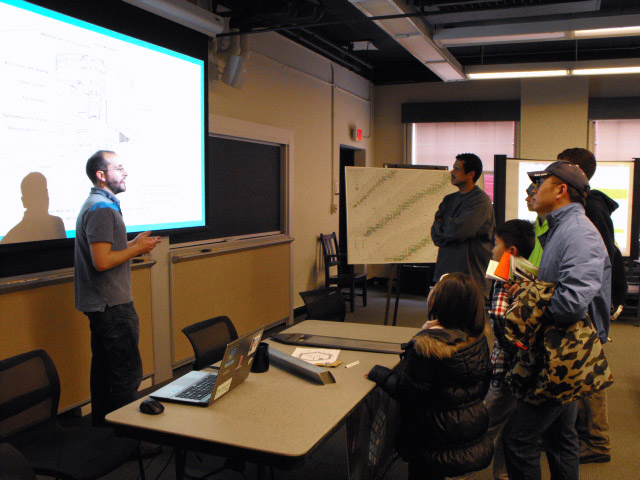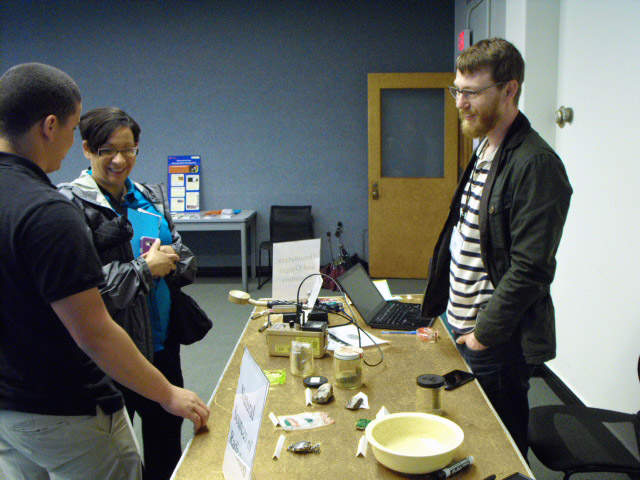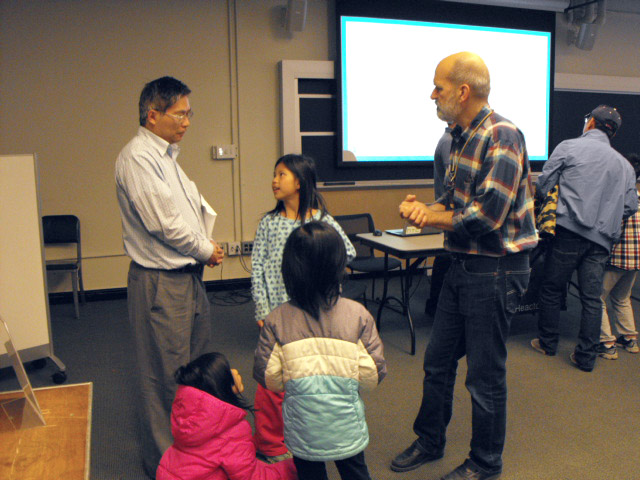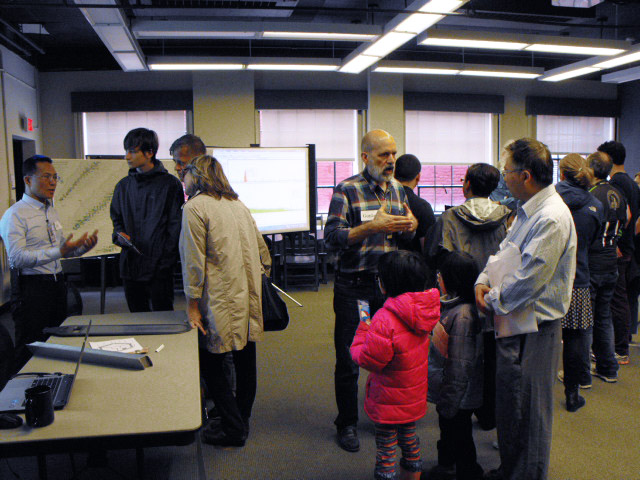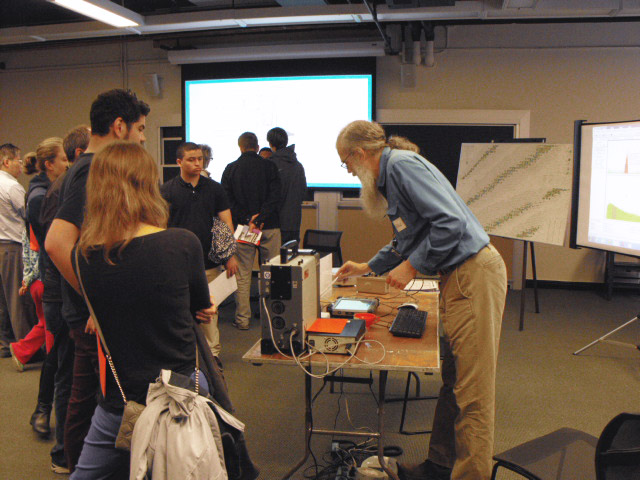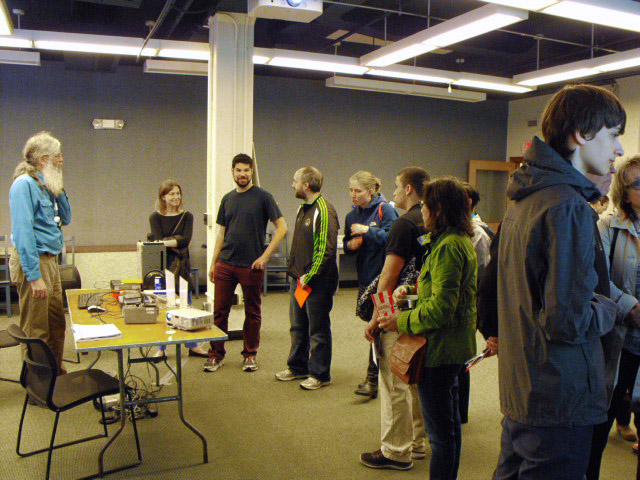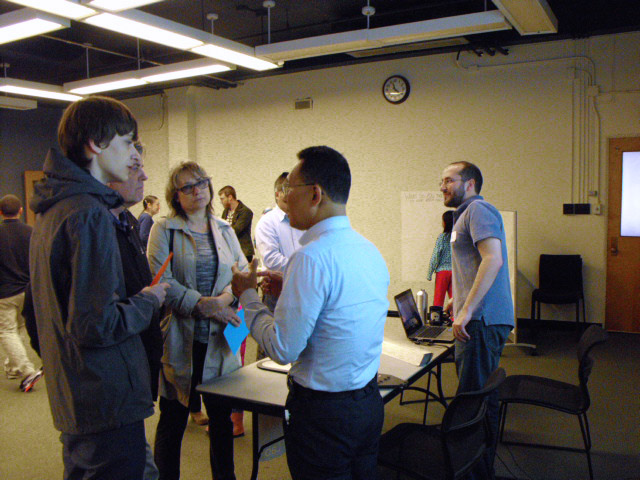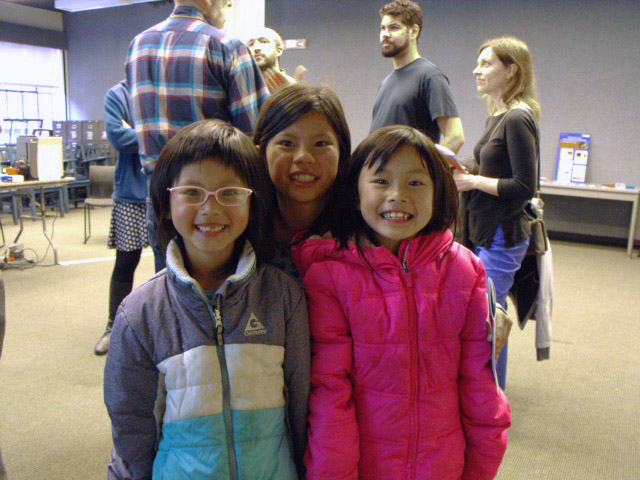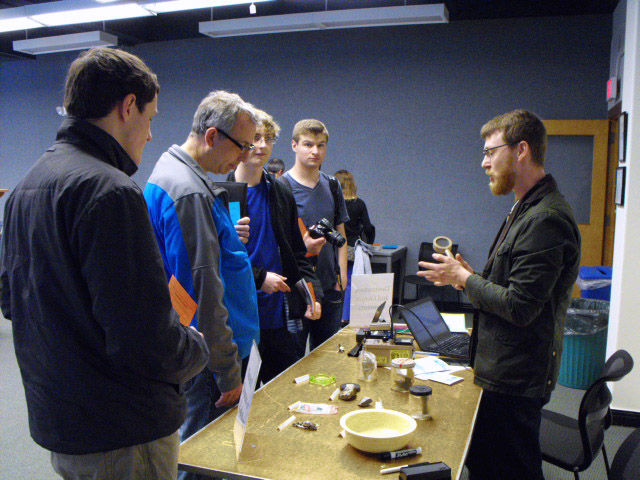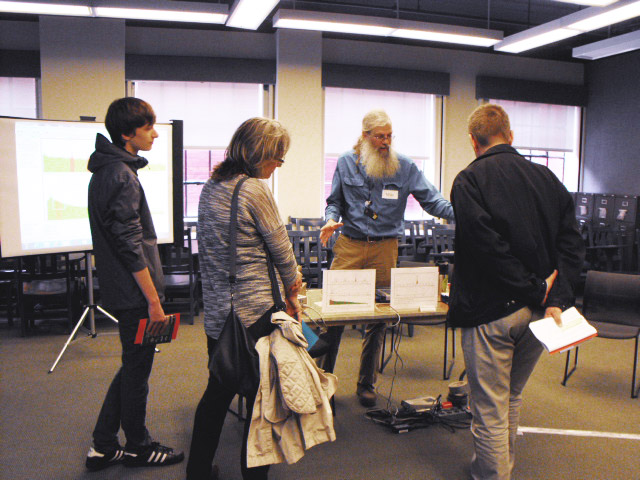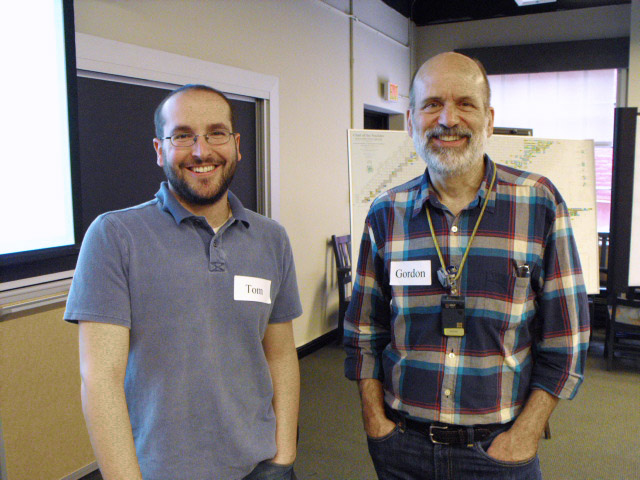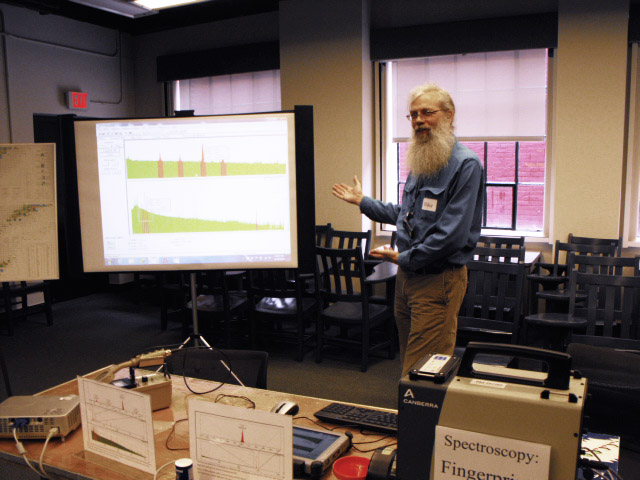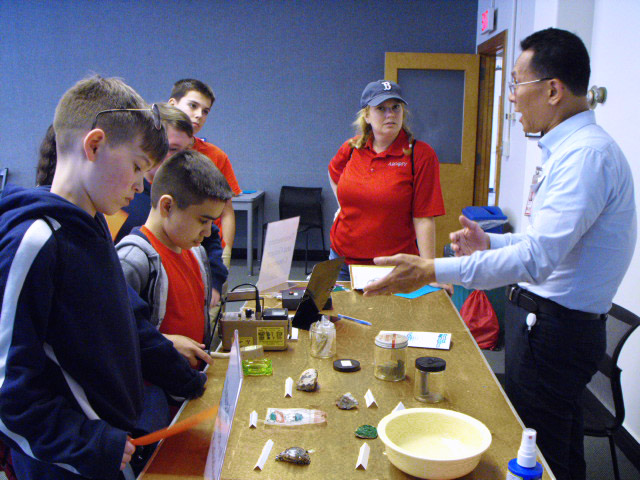Photos from our Nuclear Science and Technology Q&A MIT Open House Event
Thank you to everyone who attended our Nuclear Science and Technology Q&A event as part of MIT’s Open House! On April 23rd, MIT opened up its doors to the public for “Under the Dome,” a free, day-long, campus-wide open house for all ages. MIT welcomed the public to explore the important and fun work that takes place on campus.
About 100 visitors came to our Q&A and learned about how the MIT reactor works and what experiments are done at the facility, various natural sources of radiation, different ways radiation can be detected, spectroscopy and how gamma rays emitted by radioactive sources can be used to figure out what kind of radioactive isotope is in the source, as well as the answers to any questions they asked. It was a pleasure to feed everyone’s curiosity! We look forward to participating in similar events like this in the future. Take a look at some photos from the event below!
(Click on an image to view it larger in a new tab)

